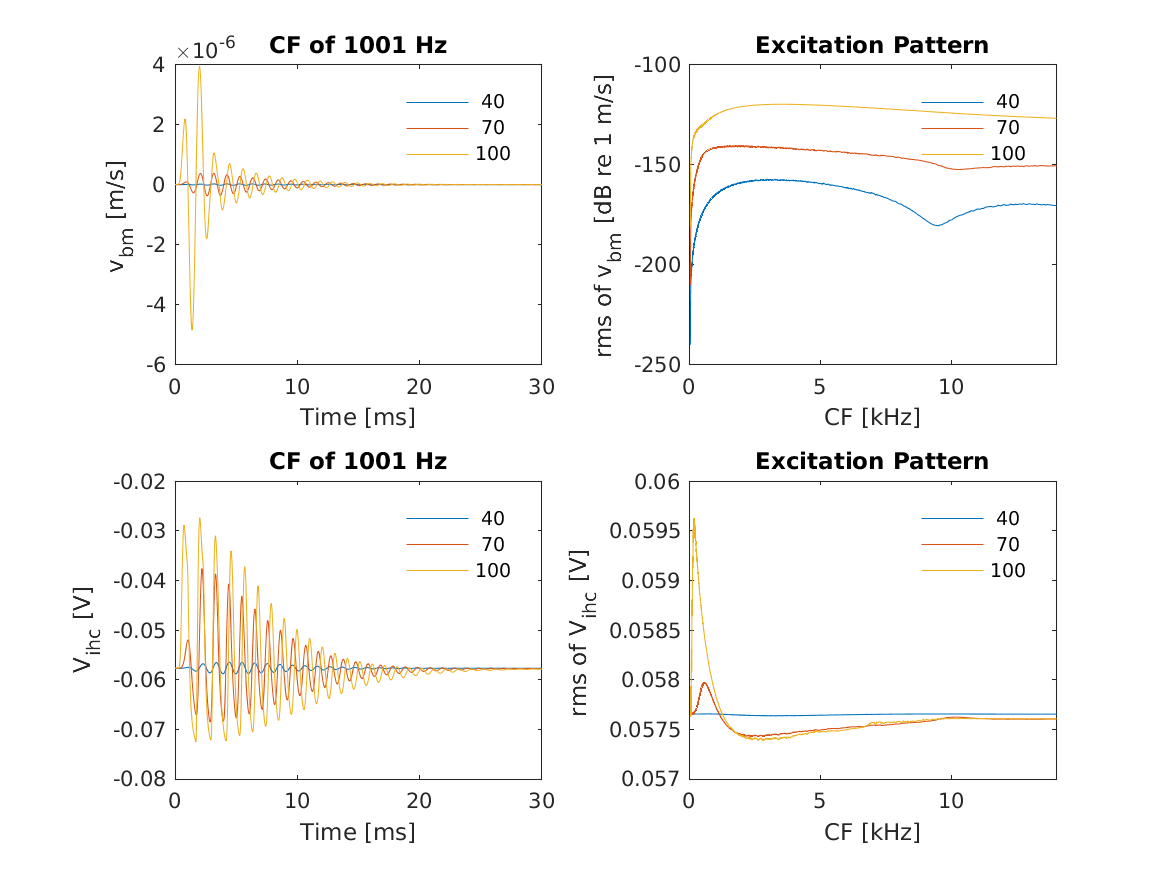THE AUDITORY MODELING TOOLBOX
This documentation page applies to an outdated AMT version (1.3.0). Click here for the most recent page.
DEMO_VERHULST2018 - Demo of the auditory brainstem model described by Verhulst et al (2018)
Description
This script computes the responses to one click of single polarity.
The following figures are obtained:
- Characteristic frequencies of equidistant points along the cochlea.
- Ear-canal pressure signals that can be used to simulate otoacoustic emissions (see also demo_verhulst2012.m).
- Simulated basilar membrane velocity (v) or inner-hair-cell voltage (vihc).
- Simulated unit responses to HSR, MSR, LSR neurons, auditory nerve responses, and cochlear nucleus (CN) and inferior colliculus (IC) neurons.
- Population responses waave I, III, V, and envelope following responses.
The current demo is based on the scripts ExampleSimulation.m and ExampleAnalysis_function.m from https://github.com/HearingTechnology/Verhulstetal2018Model
License:
This model is licensed under the UGent Academic License. Further usage details are provided in the UGent Academic License which can be found in the AMT directory "licences" and at <https://raw.githubusercontent.com/HearingTechnology/Verhulstetal2018Model/master/license.txt>.%

Characteristic frequencies of equidistant points along the cochlea.

Ear-canal pressure signals that can be used to simulate otoacoustic emissions.

Simulated basilar membrane velocity (v) or inner-hair-cell voltage (vihc).

Simulated unit responses to HSR, MSR, LSR neurons, auditory nerve responses, and cochlear nucleus (CN) and inferior colliculus (IC) neurons.

Population responses waave I, III, V, and envelope following responses.














